Yes, I am saying it again…leading effectively is indeed a high calling and a tall order.
Why do I say this routinely?
I say this because the list of competencies (knowledge, skills, and abilities) that effective leaders are expected to demonstrate can be exhausting when we really take a look at all the multiple skill-sets a leader is required to live out in and among his/her organization.
For example, here are just a few skill-sets leaders are expected to demonstrate:
- Cast organizational vision
- Find and select the right people with the right skill-set and culture fit
- Develop a team of very diverse individuals, including a mixture of 5 generations who work side-by-side
- Communicate effectively
- Facilitate conflict resolution and problem-solving
- Gain commitment across the organization
Many of the credible leaders I have had the privilege of working with understand the high calling of leading others. Many are continuous, life-long learners and have sought executive coaching because they understand there is a lot yet to learn as they move into the 2020 workplace and beyond.
These credible leaders understand they have been entrusted with engaging the minds and hearts of those they lead. They understand achieving this is not an easy task, even for the most admirable leader.
Some leaders seek coaching because they have one or two specific growing edges they need to work on. They realize there are certain patterns of behaviors getting in their way or in the way of those they work with or lead. In this case, we search out their strengths to help them overcome or manage their growing edges. Sometimes, coaching is suggested or highly encouraged, or even made mandatory by an individual’s supervisor. In all of these cases, identifying strengths and development opportunities for a leader is important so targeted development can begin.
So, how do you begin to sort through areas for development which will have the most impact for the leader and the organization? I believe asking the following questions will begin to help identify specific areas for the leader to focus on:
Are the development opportunities found in leading direct reports? Are they found in reaching across the organization and working with others? Are the leader’s growing edges operational in nature?
I believe the answer is found in focusing on the competencies critical to the leader’s area of influence.
For example, I worked with a leader last year, and one of his strengths was working effectively with his direct reports. This leader demonstrated competencies critical in his direct area of influence (his group of direct reports), such as coaching and developing, leading team effectiveness, building and maintaining relationships, and resolving conflict. However, this same leader struggled with competencies which are critical in being effective in another area of influence, across the organization. Those competencies include fostering alignment across the organization, leading consistent messaging regarding change, and collaborating with peers. By looking at this leader’s specific area of influence, we were able to pinpoint development opportunities and target his development efforts.
There are several areas of influence a leader is responsible for impacting. The following competencies have been grouped by what are typically found in a leaders’ area of influence:
Area of Influence: Self-leadership (foundational)
- Personally effective
- Establishes credibility
- Leads with purpose
- Demonstrates Interpersonal savvy
- Understands one’s own values
- Manages politics
- Integrates cross-functional perspectives in decisions
- Offers flexibility
- Composed
Area of Influence: People on the leader’s team (moves beyond foundational leadership to leading people who are closest to his/her direct span of influence)
- Coaches and develops others
- Leads team achievement
- Builds and maintains relationships
- Resolves conflict
- Delegates
- Facilitates innovative problem solving
- Models the organization’s values and associated behaviors
- Negotiates adeptly
- Accessible
Area of Influence: Functional Leadership (in and among the leader’s direct area of influence)
- Casts vision
- Drives results
- Practices strategic thinking and acting
- Fosters engagement
- Identifies innovative ideas for new business
- Willing and able to work across organizational boundaries
Area of Influence: Leading across the organization
- Assists in setting organization-wide direction
- Fosters alignment across the organization
- Gains commitment across the organization
- Looks out for the greater good of the entire organization
- Develops healthy and effective relationships at all levels of the organization
- Leads and carries the message of change consistent and in alignment with other members of the leadership team
Benefits of Assessing by Areas of Influence
Leaders can target their development quicker and more intentionally when they understand which area of influence they need to improve upon and the competencies that are critical to the specific area of influence.
In addition, it will be easier to determine if the leader is capable but not willing, or willing but not capable, of demonstrating a specific behavior.
For example, a leader may have demonstrated the ability to develop effective relationships with his/her direct reports, yet struggle with connecting with his/her peers. In this example, a leader has clearly demonstrated they are able to foster effective relationships, yet they may not be willing, or perhaps they are not paying attention to those important peer relationships.
Derailment Characteristics
Sometimes we see leaders who find themselves derailed, and subsequently, they demonstrate certain characteristics. The following are those patterns of behaviors that can cause the leader, and others in the organization, difficulty:
- Difficulty changing or adapting; resistant to change.
- Refusing to be an accountable member of the senior team and communicating the overall strategies and/or change initiatives with a positive and accountable spirit.
- Creating division among teams and/or organizational entities.
- Resistant to learning from mistakes.
- Failure to follow up on promises or not being proactive in providing information that would benefit the overall organization.
- Problems with interpersonal relationships and difficulty in developing good working relationships with others.
- Too narrow a functional orientation, rather than influencing the greater whole of the organization.
- Lacks depth, desire and ability to lead outside of one’s current function.
Comprehensive Leadership Development Program, Executive Coaching and 360 Degree Assessments
Yes, leadership is a high calling, and if we get it right, it can be one of the best life adventures we will experience.
Leading others is not for everyone. However, if you are called to lead you, can be better equipped to lead.
Fortis Leadership is here to help.
We have a cadre of executive coaches ready and equipped to help you and/or your leaders step further into this high calling of leadership in an intentional and targeted way.
We wish you all the best as you continue to grow, change and lead.
Warmly,
![]()
Jan Bazow, CEO Fortis Leadership

